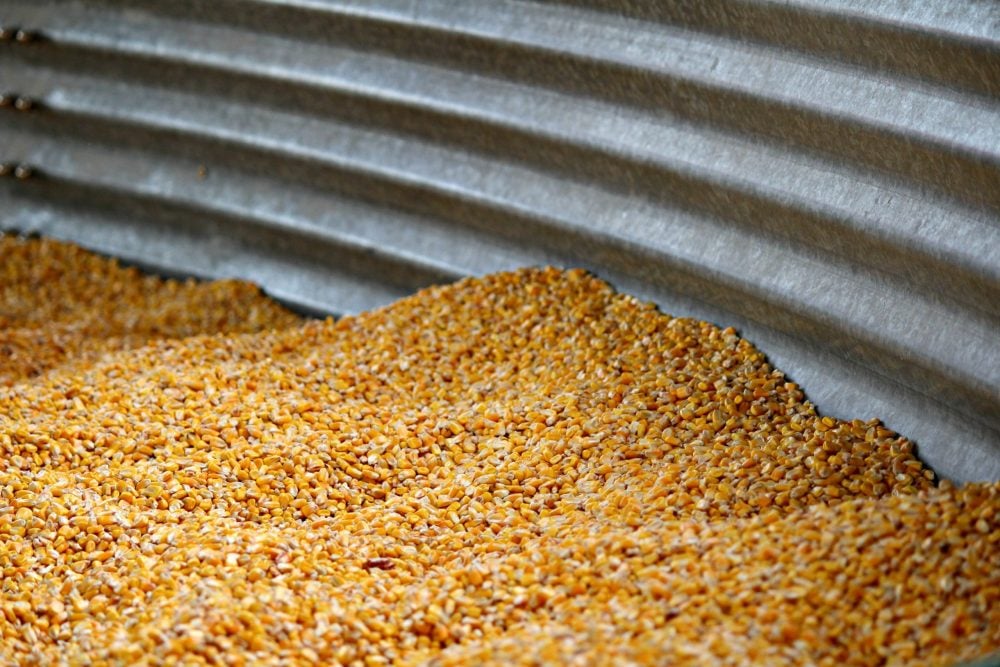Chicago | Reuters — U.S. wheat futures slid nearly one per cent on Friday in a profit-taking setback following the steepest rally in three months the previous session on worries that a cold snap in the Midwest and Plains could damage the dormant winter crop.
Soybeans rebounded from early session losses as strong U.S. export sales offset pressure from favourable crop weather in major exporter Argentina and rising crop forecasts for Brazil, the world’s top soy supplier. Talk of fresh Chinese demand for near-term U.S. supplies propelled prices to session highs late.
Read Also

Feed Grain Weekly: Demand, activity slowly rising
While demand and activity is slowly ramping up for the fall cattle run, feed grain prices are currently in decline, said a Lethbridge, Alta.-based trader.
Corn closed nearly unchanged, supported by strong export sales but capped by profit-taking ahead of the weekend following three days of gains.
“We rallied the wheat this week, trying to put in a premium for the weather with the very cold temperatures in the Plains, where there is virtually no snow cover to protect the wheat,” said Brian Hoops, president and senior market analyst at Midwest Market Solutions. “But it’s very hard to maintain any rally on fears of frost. You have to see some damage.”
Temperatures plunged to the single digits to below 0 F (-18 C) across the northern Midwest and Plains, and colder conditions are expected next week.
Most of the Plains hard red winter wheat crop was safe from the threat of winterkill, but areas of eastern Nebraska were at risk, said agricultural meteorologist Don Keeney of MDA Weather Services.
Soft wheat in central and western Illinois and in northern and east-central Missouri could be damaged the most, although weekend snowfall may offer some protection, he said.
Chicago Board of Trade (CBOT) March SRW wheat fell 4-3/4 cents, or 0.8 per cent, to $5.65-1/4 a bushel but held on for a 0.3 per cent weekly advance, its first in nearly two months (all figures US$). March HRW futures dropped five cents, or 0.8 per cent, to $6.27-1/4 a bushel.
Both contracts notched their first weekly gains in nearly two months, with SRW adding 0.3 per cent in the week and HRW rising 0.6 per cent.
Export demand
Strong U.S. export demand supported corn and soybean prices despite pressure from rising supplies in South America.
Rains replenished heat-stressed soybean crops in Argentina this week but stalled the soybean harvest in Brazil, although that country’s crop was expected to be larger than early-season forecasts.
Crop analysts Safras + Mercado on Friday forecast Brazilian soybean production this year at a record 91.8 million tonnes, above the 89 million-tonne U.S. Department of Agriculture forecast.
USDA on Thursday reported U.S. soybean export sales last week at 1.67 million tonnes, including 703,400 tonnes of old-crop soy. Corn sales were 693,200 tonnes. Analysts had expected 300,000 to 625,000 tonnes of soybean sales and 250,000 to 650,000 tonnes of corn.
USDA also reported private sales on Friday of 370,000 tonnes of old-crop corn to Japan, Egypt and Spain, and 126,000 tonnes of new-crop soybean sales to China.
CBOT March soybeans added 7-3/4 cents, or 0.6 per cent, t0 $12.84-3/4 a bushel after earlier dipping to $12.63-1/2, the lowest point for a front-month contract since Nov. 7. The contract lost 2.4 per cent this week, its first weekly drop in three weeks.
Soybeans pushed to session highs late in the day on reports of fresh demand from China for February and March shipments from the U.S. Gulf Coast.
CBOT March corn gained 1/2 cent to close at $4.29-1/2 a bushel, up 1.3 per cent in the week.
Commodity funds were net buyers of an estimated 7,000 soybean contracts on the day but were net even in corn, trade sources said.
— Karl Plume reports on ag commodity futures markets for Reuters from Chicago.















